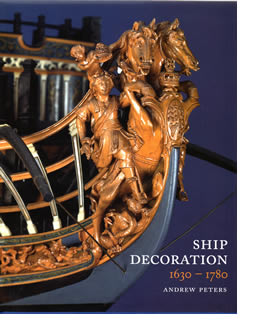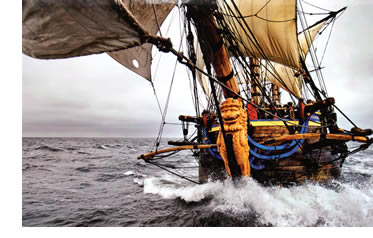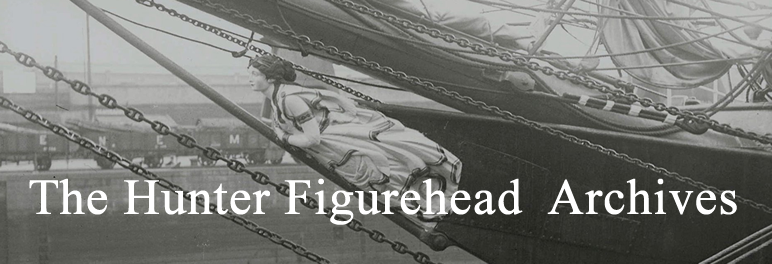 By Andrew Peters
By Andrew Peters
A review by Richard Hunter
Figurehead Historian
Any kind of original research no matter what the subject can be extremely arduous, visits to numerous Museums, libraries and archives, searching over countless books and historic documents hundreds of years old, imagine how difficult this would be if the subject you are researching covers countries as diverse as Sweden, Denmark, The Netherlands and France, each with it’s own unique and challenging language and traditions, Andrew Peters in his book “SHIP DECORATION 1630-1780” just published by Seaforth ( ISBN 9781848321762) has for the first time brought the complex subject of European maritime carved decoration to our attention, to understand the reason for this interesting time frame between the dates 1630 to 1780, one has to first understand and appreciate what forces in these countries caused the creation of large mercantile fleets, under the control of individual companies, known as East India Companies, this is redressed in part one of the book, with a brief history of each company and how they became established and operated, from each company came an explosion of artist creativity in wood that could arguably be described as the golden age of decorative ship carving in Northern Europe, it is during this comparatively short period of just over 150 years that forms core of this work, before 1630 the shape and opportunities for lavish decoration was relatively limited, after 1780 attitudes and financial restraints together with changes in Naval Architecture saw a steady decline in the excessive use of carved decoration,
The bulk of this book is Part two, with five sub chapters, following in meticulous detail the French, Dutch, English Danish and Swedish East India companies, and how they developed individual styles with distinctive national variations from the late Renaissance to the flamboyance of the heavy rich baroque, and onwards to the relatively light and naturalistic rococo and neoclassicism, during 12 years of research Andy has gathered a rich pictorial reference source that shows this progression in style and construction taken from contemporary ship models, paintings and plans, plus views of rare surviving carvings still to be found in public collections throughout the areas in question, as a Figurehead historian, I have found the listing of individual ship carvers and there working dates and places of work at the end of each countries section of particular interest, many of the English names are very familiar, however for the rest of Europe this is particularly valuable reference material, it is fascinating to see how Andy has been able to establish a correlation between the carved Architectural and sculptural work of the period ( much of which has survived particularly in Sweden and Denmark, ) and how this translated to maritime decoration used on the companies vessels, at the same time establishing a link between well known artists such as Jean Berain, Grinling Gibbons and Anthony van Dyke, as they moved between commissions for domestic work to the more demanding ornamentation of ships, with it’s own unique production difficulties and values.
In recent years two major replication projects of historic vessels have taken place in France and Sweden, with the building of historically accurate vessels such of the French East India Companies vessel Hermione of 1779 and the Swedish East India Company (SOIC) vessel Götheborg of 1738, fortunately for Andy he was chosen by both projects to be the sole ship carver, working on the entire decoration scheme from the figurehead to the Tafferel and quarter pieces on the stern, together with numerous other carved details offering each vessel a continuity of style and quality vital to it’s success and authenticity, years of detailed research in the Maritime Museums of Northern Europe has enabled Andy to understand and appreciate the stylistic differences between each unique project. Equipped with the help of detailed working drawings and scaled models, very much as the original carvers would have produced for the commissioning bodies of the individual companies in question, eventually this preliminary work would culminate in a series of carvings for both vessels comparable in quality to the original craftsmen working in the shipyards of Rochefort, Amsterdam, Deptford or Stockholm, modern labour saving technology and materials may have been of help in the construction of these carved elements, however at the end of the day, it’s down to the skill and gifted hands of one craftsman, carrying on a tradition that for the Swedish Götheborg and the French Hermione has physically brought history back to life.
Details and views showing the replication of the Hermione figurehead at Rochefort can be found at the end of the French section in part two, with two stunning views in full colour showing the figurehead fixed to the stem head, while accounts of the Götheborg project can be found in it’s own section at the end of the book, Part three, showing the transition from Andy’s initial design conception, based on his research to photographs showing in detail the carving and ultimate installation of all the finished carvings, culminating in the truly monumental 14 foot Lion Figurehead on the bow.
As with any book published by Seaforth the production values of this publication are faultless with over 300 illustrations in Black and white, with several pages of full colour views of contemporary ship models in 240 pages, ending in an extensive Bibliography from all five countries, “Ship Decoration 1630-1780” covers an area of Maritime history too long neglected, this new book offers a wealth of hitherto unknown and difficult to access information and reference material, ideal for the modern day model maker, Naval and Maritime History enthusiast, plus those interested in the history of applied arts, as it moves from comparison in domestic as well as Naval architecture, this is and will become in the future the principal reference source for those looking in to the history of ship decoration at a pivotal period in the history of Northern Europe.
This hardback book is now available by emailing the author andy@maritimawoodcarving.co.uk
or through the publishers direct at Pen & Sword books Limited, 47 Church Street, Barnsley, South Yorkshire, S70 2AS
tel: 01226-734 222
www.pen-and-sword.co.uk
ISBN 9781848321762
Or from any good bookshop
The Price of this book is £24 plus postage.
